Continuing the ongoing series of interviews with creative artists working on various aspects of movie and TV productions, it is my pleasure to welcome François Séguin. In this interview François talks about splitting his time between the worlds of film, theater and opera, comparing the pace of work and various aspects of storytelling in each, what makes people stay in the industry despite crazy hours and pressured schedules, shooting on location and building sets on stage, the advances in digital equipment and how that evolution is affecting the overall rhythm of a feature production, and the importance of set physicality. The second half is all about his work on the gorgeously designed “Brooklyn”, delving deeper into the details of researching, defining and building the sets that span two worlds bridged by the story of one girl played by Saoirse Ronan.
Kirill: Please tell us about yourself and your path so far.
François: To go back to the beginning, I was in a theater group in college, and everybody had to be on stage. I didn’t want to be on stage, but I was with friends, and somebody asked who wants to take care of the set. I raised my hand, and he told me that he’d give me just a little part in the play so that I could do the sets. I was happy, to not be on stage. That’s how it started.
After that I went to theater school in early 1970s. I did theater for a few years, and at one point the play that we did as a young group with other people from my school had a film adaptation. I went from designing a set for the play to the same thing but on film.
I mix them. Some times I don’t do much theater, and some times I go back to it. These days it’s half and half between film, theater and opera, and I also did three shows for Cirque du Soleil.
Kirill: How much different are these for you? In theater and circus I’d imagine that you have less control over where people are, their viewpoints and what they’re looking at.
François: The point of view is different from a movie because you don’t have the camera, so everybody has their own vision of the action. But in modern theater, with all the technical advances and especially the lighting, you can mimic the camera. You can focus the vision of audience so they have the same view.
These are different experiences, but it’s all about storytelling. What is the story you’re going to tell? And depending on the medium you have different tools to do that. I like to move back and forth. I think it’s healthy mental exercise to go and think about detail, about where the camera is going to be, about where everybody is going to be sitting. It’s a bigger stroke when you do stage, and much more detailed on film, more like a fine painting.
Kirill: Do you think you have more control in theater because you don’t have as many people that can change what you put on the set?
François: In a way, yes. I just received an email last week from this person who liked “Brooklyn”, but he thought we didn’t have enough crucifixes and other religious images. We were shooting in Ireland which is a very catholic place, and we had them on each and every set. But the camera decides to not put them on the screen, so it’s not visible.
I don’t miss the control. I think that the important thing in the end is the effect on the audience. How do they leave the world that you have created and how do they react to it? I’m not a control freak. It’s more about emotional connection with the spectator that is important for me.
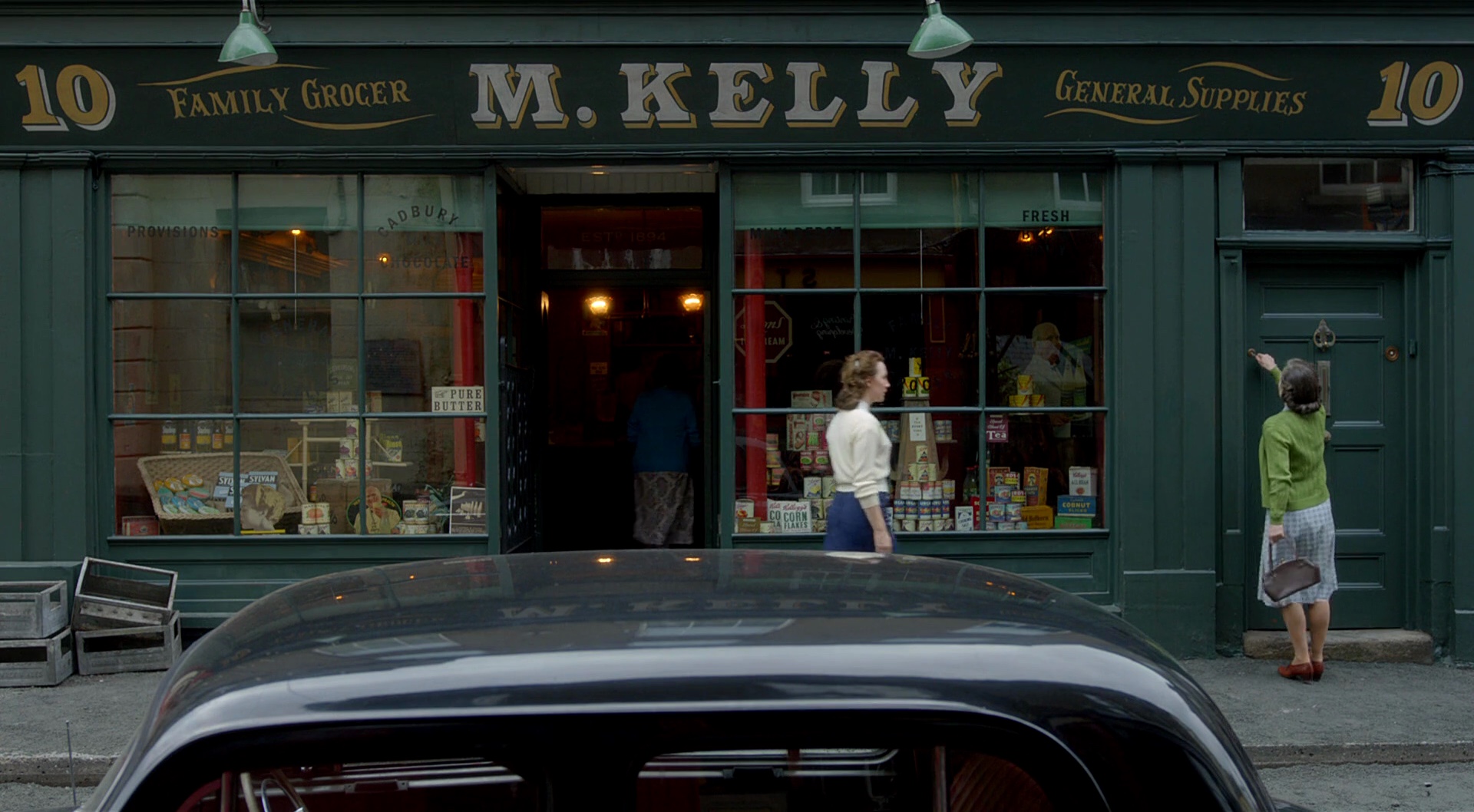
Kirill: Do you think there are stories that lend themselves more naturally to be told on film and not in theater?
François: I did one movie a long time ago; it was an upbeat musical with different storytelling. But on most movies you’re closer to the story, you’re creating an emotional world that is very tied and connected to the reality.
In theater you go for the emotional and intellectual concept of the play. I recently finished “Waiting for Godot”. It’s a classical play written in 1948 with a very elaborate description of the set, but I decided not to go there. It’s a play about people waiting for Godot, but he never comes and they are there waiting forever. I designed the hourglass, and at the end the sand is pouring down from the top, and then it disappears and you see bones.
For me this is more exciting than to do a bedroom scene in a movie. But I’m as happy to see the audience respond to this play as I’m happy to see people respond to “Brooklyn”. You touch people, and that’s what you want to do. There are different tools to do that. Some people sing, some people write, and I do sets.
Kirill: You’ve been doing this for 40 years or so. How do you avoid repetition? How do you avoid getting bored?
François: Sometimes I do get bored. But you don’t get bored when you have a common project and everybody is involved. It can be opera or anything really. It’s about everybody focused on one goal, and if you’re lucky, you have the director who can guide everybody – in whatever medium it may be – to go in a specific direction and to have a concept for the story you’re telling.
Sometimes the script might not be good, but at least it’s a good experience because you focus and everybody wants the same thing. You have somebody driving not the content, but the emotional commitment from everybody. A good moment for me is when everybody connects to the same purpose to tell whatever story we are telling. It can be opera, theater or film.
Kirill: Does it matter to you how people view your work? Do you look at the reception from the critics, from the general audience, at how well a production does financially at the box office?
François: The box office results is mostly about how many people see it, and as I don’t have any financial part in that, it doesn’t matter for me. But it means that people enjoyed the movie. I did a couple of important movies in my life that I’ve really connected with, and when people say that they’ve hated them, it’s a bit painful – because it’s a movie that I really believed in. I did a couple of movies that I’m really proud of, and some people still talk about them, even though that was 30 years ago. They were not blockbusters, but they made a statement and they survived. That’s a good thing.

Continue reading »
In the last few years her career spanned such a variety of productions as “Gangster Squad”, “Speed Racer”, “Immortals”, “Terminator Salvation” and “Avatar”, taking on roles as diverse as painter, compositor, designer, animator and supervisor. Most recently, after having joined Cantina Creative, she was the visual effects [VFX] supervisor on “Iron Man 3” and “Hunger Games: Mockingjay – Part I”. It gives me great pleasure to welcome the multi-talented Venti Hristova to the ongoing series of interviews on fantasy user interfaces.
In this interview Venti talks about the different roles she took on since she joined the industry, the spectacular magic of visual effects and the ongoing evolution of tools and artistic capabilities in the field, how “done” or “not done” is the HUD interface in Ironman mask, the role of VFX supervisor on blockbuster sci-fi productions and her work on the variety of screens in “Mockingjay”.
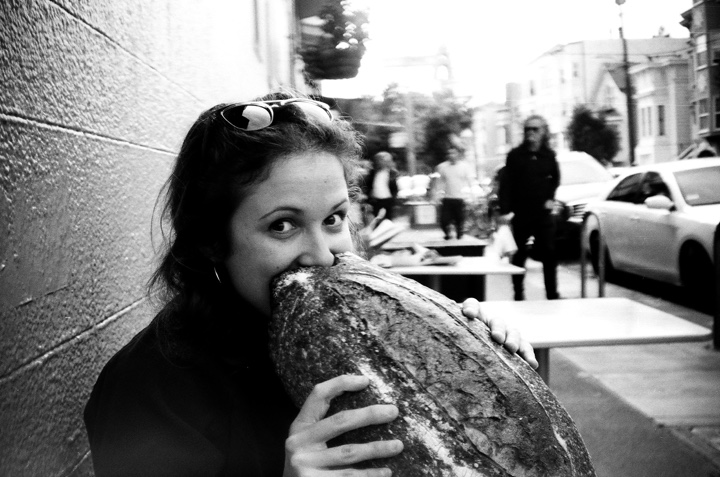
Kirill: Please tell us about yourself and your professional path so far.
Venti: My name is Venti Hristova. I was born in Bulgaria, I spent my childhood in England and I have been in LA for the past 18 years. My professional path has been paved by two people: the first is my dad, Lubo Hristov.
He started as a traditional animator and background artist in Bulgaria. Later he moved us to England where he became VFX Art Director at Cinesite London. After almost a decade in England he transferred us to Los Angeles. Soon after moving to LA, he founded a boutique Matte Painting company- Christov Effects and Design. Within the past two years my dad moved yet again; this time to Singapore as Art Director for ILM.
I studied illustration at Art Center College of Design and in my graduating year my dad took me to Berlin to work on set with him in designing the digital environments for Speed Racer. That was my introduction into the world of feature films and VFX. In Berlin I met the second most influential person in my professional life, Stephen Lawes.
Stephen is the co-owner of Cantina Creative, a VFX and motion graphics company based in Culver City. When I met Stephen, he introduced me to After Effects and animation and my life has not been the same since. Shortly after graduating from Art Center, Stephen hired me to design and animate graphics for Terminator Salvation at Pixel Liberation Front. Since then I worked my way from animator, designer, compositor to VFX supervisor.
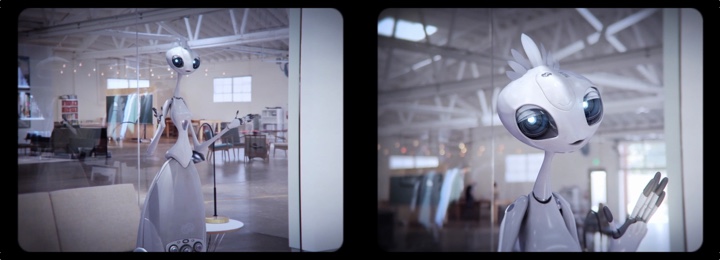
Stills from short film “Gumdrop”. Art direction and animation by Venti Hristova.
Kirill: What drew you into the movie industry? If you go back to the time when you just started on your first feature film productions and some of the expectations that you had, how close (or far) has the reality of working in the industry turned out to be?
Venti: I guess you could say I was grandfathered into the industry through my dad. I was surrounded with his experiences on dozens of prestigious films and it was largely inevitable to become a part of the movie sphere in some capacity. I very much enjoyed matte painting and environment designing and after meeting Stephen Lawes I realized that I thoroughly enjoy animating motion graphics.
Kirill: What was it like to “lift a veil” on the magic of cinema and special / visual effects and see how much work is involved in making that magic happen?
Venti: I would have to say that VFX in itself is a pretty spectacular sort of movie magic that the average viewer is deprived from experiencing. I think that working in VFX is one of the more exciting aspects of the film industry these days because it encompasses such a huge part of the whole film production process from pre-production all the way through post.
Kirill: You’ve had a variety of roles such as matte painter, compositor, animator on production such as Gangster Squad, Immortals and Terminator Salvation. What are your thoughts on the evolving capabilities of digital tools at your disposal, and what they let you offer to the producers and the directors as the years go by?
Venti: The world of VFX tools in constantly evolving, so much so that you can get overwhelmed with the amount of new technologies. There is something very purist and “old-school” with relying primarily on one software such as my commitment to AE, however, the magic opportunities that open up with integrating C4D with AE or even Nuke and exploring the amazing universe of new plugins for blurs, glows, time-remaps, etc. is phenomenal. Looking back at the tools we were using on Terminator Salvation vs the tools we used for Iron Man 3, technology has made leaps and bounds and we have abused all their new flashy updates. At this point I can safely say there are no limits to what we can offer clients and that is a fantastic place to be professionally.
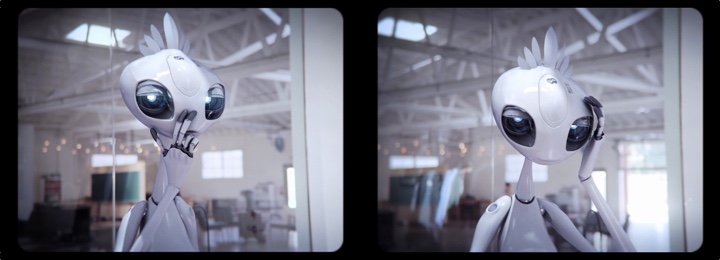
Stills from short film “Gumdrop”. Art direction and animation by Venti Hristova.
Kirill: Is everything can be done and it’s only the matter of time and budget? Do you feel that the demand from the production side is outpacing the evolution of tools’ capabilities?
Venti: I don’t think that production has outpaced VFX tools and capabilities. In the time of ILM and Weta the opportunities for VFX are limitless. There really is little that cannot be done at this point.
Kirill: Back in 2004 “Sky Captain and the World of Tomorrow” was shot entirely on green screen, with all the sets created digitally in post-production. In your opinion, is this something that you want to work towards, to be able to offer complete world creation for any kind of a film production?
Venti: Ironically, Stephen Lawes was an integral part of the creation of Sky Captain and the World of Tomorrow, and we met on a movie that similarly relied almost exclusively on green screens/ VFX environments, Speed Racer, so in that regard I have experienced working on that kind of production. That being said, I recently worked on the set of Mockingjay Part 1+2 and it was an incredible experience to walk on a fantastically production designed set with spectacular detail and construction. I think I prefer to work on movies with a healthy balance of movie practical realism and VFX movie magic.
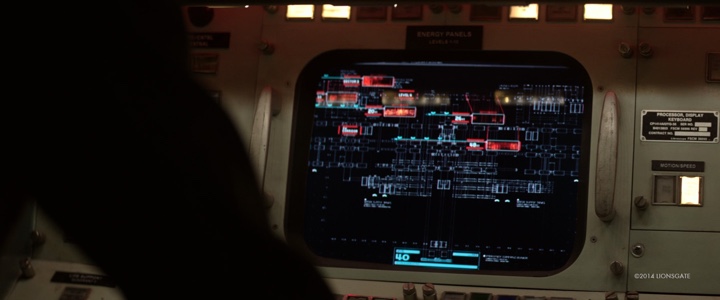
Screen graphics on “The Hunger Games: Mockingjay – Part I”. Courtesy of Cantina Creative.
Continue reading »
Some are calling it the golden age of television. In the last decade or so we are seeing an incredible wave of episodic television productions of the highest quality, bringing to life a variety of stories and storytelling talent that explore wider story arcs enabled by the longer format. Showtime’s “Penny Dreadful” is undoubtedly one of these shows, with two amazing seasons under its belt and third season returning to our screens on May 1 this year.
In late 2014 I’ve had the privilege to interview one of show’s cinematographers, Owen McPolin. It gives me great pleasure to welcome Jonathan McKinstry who is responsible for the production design of all three seasons of “Penny Dreadful”. In this interview he talks about his transition to the world of episodic television after having worked on multiple large screen movies, the differences in running an art department between feature and episodic productions, and a deep dive into bringing the wonderfully dark worlds of the Victorian era into our lives.
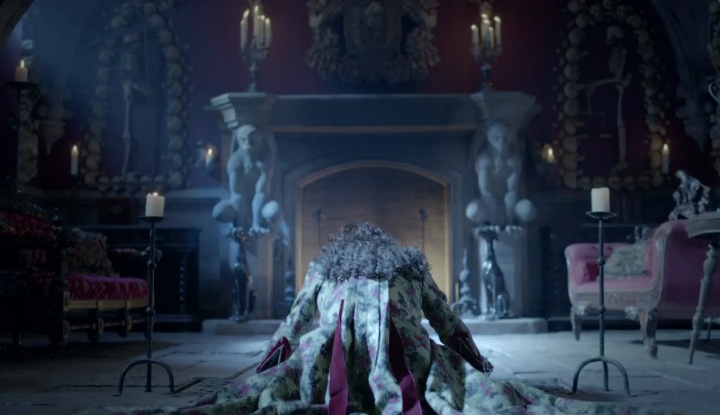
Kirill: Please tell us about yourself and your path so far.
Jonathan: I’m Jonathan McKinstry, production designer of Penny Dreadful at the moment, just finished working on season 3.
I started around 1982-83 after having done a degree in interior design. I knocked on lots of doors and did a couple of summer jobs working for Granada Television in Manchester, and then knocked on lots of doors with my portfolio in London, managing to get my first job on a film which was “Return to Oz”. Since then I gradually worked my way through the art department as junior draughtsman, draughtsman, assistant art director, art director, supervising art director to, presently, production designer.
Kirill: Those were the days where you didn’t have a lot of digital tools at your disposal, so you’d either build the sets physically or do miniature sets to emulate larger-scale vistas.
Jonathan: Certainly CGI [computer generated imagery] didn’t exist when I started, and it was all foreground miniatures, false perspectives, matte paintings – the technology that the first Star Wars had, really.
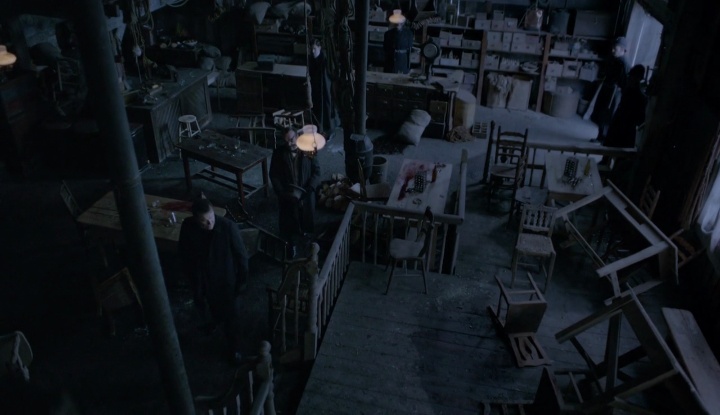
Kirill: And that worked pretty well in the world that didn’t have high-resolution digital cameras, in the television world as well as in feature film.
Jonathan: Obviously making dragons fly was much more complicated, so that would become stop motion or some kind of animation or claymation that they used on my first film “Return to Oz”. But now with computers there are so many things that can be done in post-production, and sometimes it’s the easy option for the director or the producers that they don’t have to make a decision upfront and want to fix it later. It’s not always a cheaper option, it depends on how it’s used and when it’s used.
Kirill: As a production designer you don’t usually get to stay into the post-production phase. Does it worry you that you don’t have as much control or influence over the production design side of the final product?
Jonathan: A little bit. People at Showtime have been very good with me and usually involve me via email even if I’m not working on a project. I’ve had a degree of say over what things should look like, and where possible I’ve tried to give input of what things should look like during the shooting process. Obviously there are quite a few months of post-production when I’m not around.
I think that as long as people set off on the right direction, they’re very skilled at what they do. It’s when they are not set on the right direction, when there’s a mismatch between somebody sitting down at a computer on the other side of the world and thinking about what is being physically created.
Kirill: Especially, if I may jump a bit forward, if you’re talking about a world of Penny Dreadful that is rooted in a very physical world of the Victorian era.
Jonathan: There are still quite a lot of visual effects, a lot of cleanups and animated inserts. But in terms of the 3D world beyond the physical set we’ve built a backlot set and anything above 22 feet is digital extensions. I’ve had as much input as I can to try and guide them as to what I thought that should all look like. They’ve sent me reference images of what they were working on for me to approve.
Even if we are a relatively modest TV series with a relatively modest budget, certainly not an HBO budget, we still are trying to manage and achieve some pretty big looks, as big as we can.
Kirill: Especially when giant high-definition TV sets are quite affordable, and you can pause, rewind and rewind again to take a look at a particularly interesting scene.
Jonathan: The days of “made for television” are long gone now. With 65-inch LED high-definition 4K sitting two or three meters away on a sofa they are probably seeing more details than they would on a big screen in Leicester Square. You literally have to treat it as a movie or even better, certainly for the finishes and details of things.
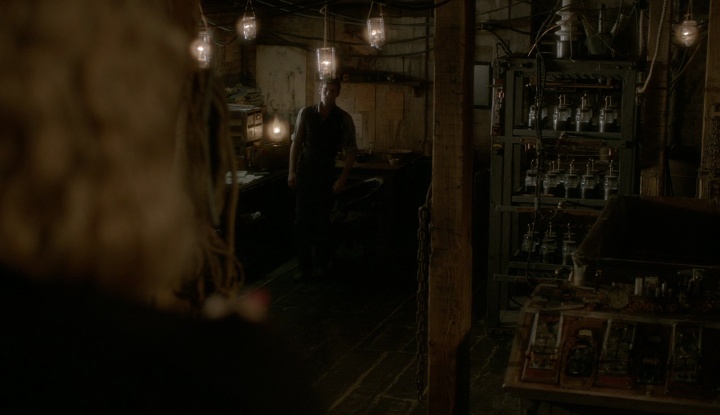
Continue reading »
Continuing the ongoing series of interviews with creative artists working on various aspects of movie and TV productions, it is my absolute delight to welcome Jayson Crothers. As there’s not nearly enough space in one interview to cover all the features and short films that he’s worked on in the last fifteen years, we’ve spent most of our time talking about the cinematography on the magnificently shot “Amnesiac” and his ongoing work on the TV show “Chicago Fire”.
As the conversation weaves between the details of these two specific projects and the overall world of cinematography, Jayson talks about the glamour and reality of Hollywood, the intersection of passion, hard work and luck that propels one’s career forward, the business aspects of making movies and how things are evolving in the world of increasingly competitive episodic TV productions, the overall job of a cinematographer through the major three phases of film production, the variety of visual tools that cinematographers use to tell a story, creating a safe emotional environment for the actors on set, spending 200 days in each of the last few years shooting 23-episode seasons of “Chicago Fire” and the variety of screens that surround us as the viewers. In addition, he takes a deeper dive in the ongoing transition from the medium of film to digital, how it affects the visual aesthetics and on-set discipline of various departments.
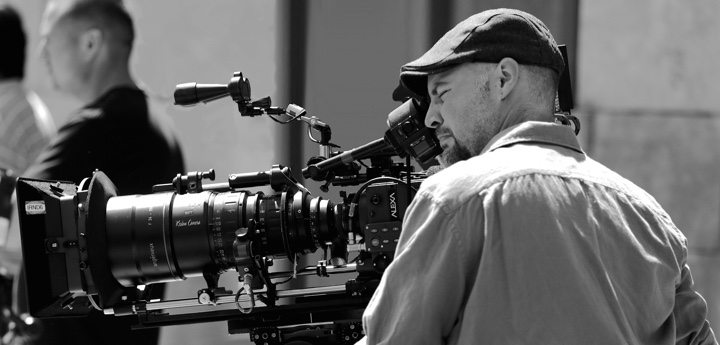
Jayson Crothers on set. Photography by Elizabeth Morris.
Kirill: Please tell us about yourself, what drew you into the industry, and how you got your start.
Jayson: Like most kids, I grew up loving movies. Over time my love of watching movies inspired the idea to make movies. I didn’t know anyone who worked in the industry and had no idea where to even start, so I took a Super 8 class at a community college. My instructor recommended I enroll in their cinematography course, and as soon as I picked up a light meter things just clicked and made sense. I continued my education getting a Bachelor’s from Columbia College in Chicago. I was an intern with Panavision and I interned under Tom Priestly, ASC on a film for MGM. Then I moved to Los Angeles and earned my MFA from the American Film Institute (AFI). After graduation, most people start shooting commercials or music videos, and work towards shooting feature films. I did it the other way around – I fell right into shooting a lot of low budget features, which I did pretty non-stop up to 2013 when I came aboard the TV show that I’m on right now (Chicago Fire).
Kirill: Allow me to bring you back to when you where studying film in Chicago and LA. There’s a lot of glamour associated with movies and Hollywood, and I’d imagine that there must be quite a few people going to these schools because of that and not because they love making movies. Did you see people attracted to the glamour, only to abandon the field once they were exposed to the everyday grind of the industry?
Jayson: Certainly. I think about my very first class at Columbia. We had around 40 students in our class, and two years later when I graduated I only saw one other person from that first class.
I think a lot of people go to film school, or want to enter the business, because there’s a lot of apparent glamour to it. A lot of people are drawn to that and how exciting appears to be. There’s a promise of money, of fame and success, and it all looks really sexy and glamorous until you’re standing on set at hour 16 in the pouring rain, and you’re ankle deep in mud, and you have a cold, and you haven’t seen your family and your dog doesn’t remember who you are [laughs]. I think that’s when the reality starts to set in for people.
This is hard work and goes beyond just a job. We work freelance, so it’s not just a job, but rather a lifestyle. You’re self-employed and you are marketing yourself. It’s like starting a business but you only have one product, and if that product isn’t working, you’re not making a living. You’re the product.
I think that when people realize that it requires a lot of work and sacrifice, then very early on people learn quickly if it’s for them or not.
Kirill: My impression is that you have to have real passion for the field to stay in it for any significant number of productions.
Jayson: Absolutely. It’s a lifestyle. Being freelance and self-employed is really nerve-wracking for some people. Very long hours is really hard for people. The sacrifice is not something that a lot of people want to do. And it’s not a judgement; for some people it’s just not for them, and for other people it is.
It’s a very specific path, and I think that if you want to have any kind of success in it, you have to be in it for the long haul. It requires an enormous commitment of time, tenacity, and patience.
Kirill: Would you say that in addition to the determination to get into the field you also need just a tiny bit of luck to get to the right production? Is pure passion enough to get into the field and to get ahead?
Jayson: It’s something that people don’t really acknowledge as much as I think they should, but there is an enormous amount of luck involved. Passion is crucial because it’s what initially gets you into pursuing this, and it’s what’s probably going to keep you going when things get hard or when you have a down time. In this business you have ups and downs all the time. So when things go down, you’re going to fall back on that passion to help keep you going forward.
Passion in and of itself doesn’t really mean anything unless you couple it with a lot of hard work. I know a lot of people who are really passionate, who work very hard, but then you need a certain amount of luck and good fortune. You need a lucky break. You need the right project, you need the right people, and you need the right time.
Every success story about people in our industry is a great story and is legitimate. But there’s a lot of hard work that most people never see – it’s that person who’s an “overnight success”, but actually has 10-15 years of toiling away before they “make it”. And these stories, I think, are a culmination of passion, a lot of hard work, mixed with the right project that was done at the right time. If anything, that might be one of the hardest things. People can be very passionate and work very hard for years and years and years before they get that lucky break.
I started shooting features right out of AFI in 2005, and my lucky break came about when I got called for the TV show that I’m on now. That’s eight years of hard work (plus all the work before AFI, which began in 1997) and a lot of close calls, of “I was almost lucky, but not quite.” And it’s hard to see year after year go by and you wonder when, or if, that lucky break is going to come.
People that are successful are the ones that work hard, but frankly are also the ones that have the patience to wait until the good luck comes along. Preparation, good fortune and hard work need to come together at the same time.
Kirill: It’s almost like you need to keep on honing your craft so that when the opportunity comes, you’re ready to pounce.
Jayson: Exactly – all the hard work and passion prepare you for when someone gives you that opportunity, and most of the time you don’t know that the project you’re working on is that opportunity. Something else that’s vital to taking advantage of these opportunities is the mindset that everything you do gets equal weight and equal respect. You treat everything as though it’s the most important project you’ve ever done; that’s, in my opinion, the definition of being professional.
It’s very rare that you work on a movie and you say to yourself that you know it’s going to be the special one. Usually you work on something and you enjoy it and do good work on it, and later on people respond to it. Or they don’t. You never really know.
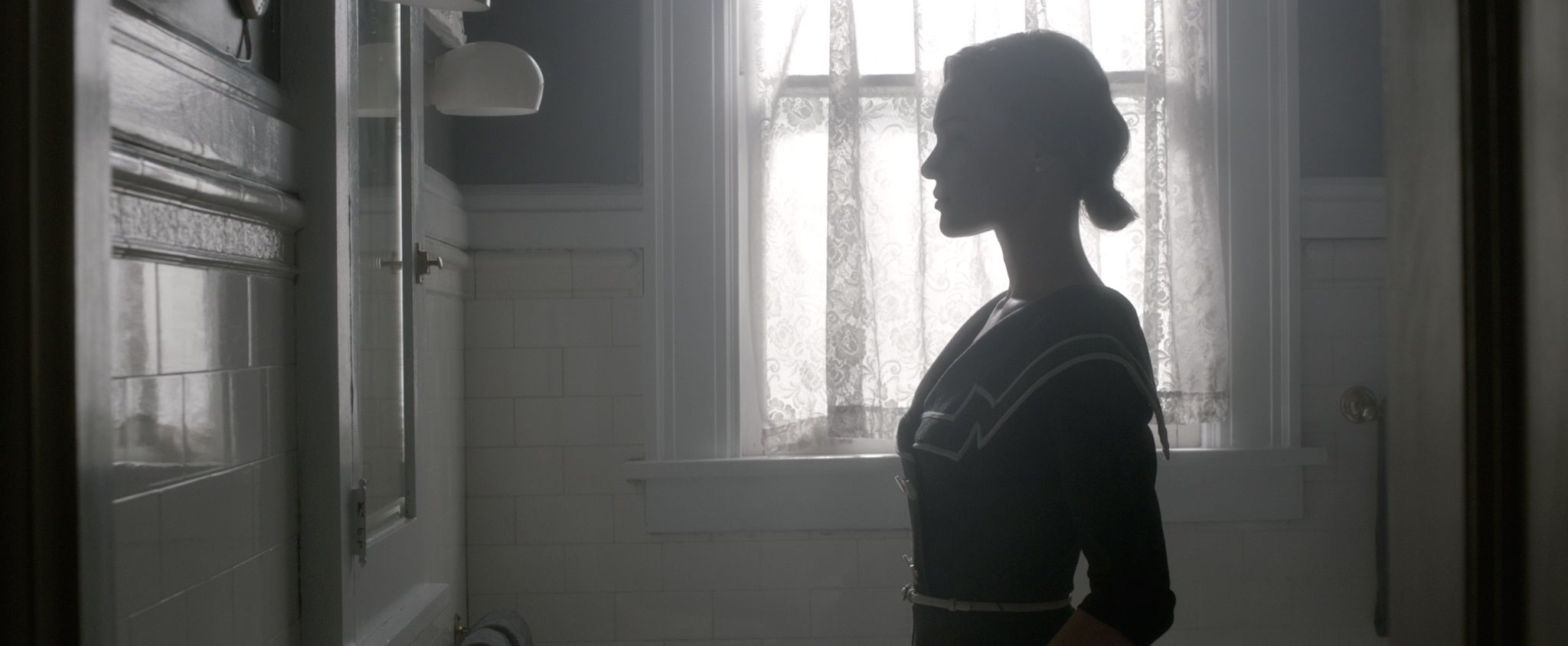
Still from “Amnesiac” courtesy of Jayson Crothers.
Continue reading »
![]()
![]()